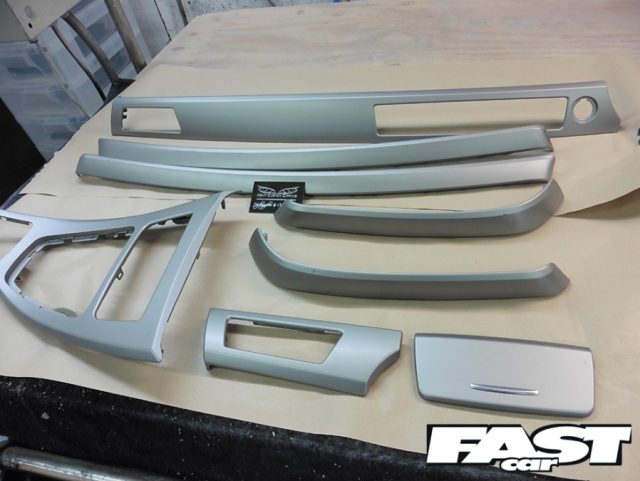Hydrodipping – a while back you may have heard a lot of people referencing it, and the same goes for plasti dip. But what do these processes involve?
The car community is always coming up with new ideas about how to modify your vehicle, and although still an option today, hydrodipping and plasti dipping arguably reached their peak of popularity during the 2010s. Still, they remain a cost-effective way of achieving certain aesthetic results, so we figured we’d run you through all that you need to know about them. Let’s start with hydrodipping…
Hydrodipping
Jules’ BMW trim before hydrodipping.
Jules’ BMW trim after being hydro-dipped black.
What is hydrodipping?
Hydrodipping is essentially a transfer process using water and paint to help you transform the appearance of an object. In this visual example, the object (or rather objects) in question is the trim from Jules’ old E91 BMW.
To turn these parts from silver to black, the folks at Kent Custom Dipping literally dipped them into a pool of water where a pigmented film lay on top. Alternatively, you can use acrylic paint at home – paint and water do not chemically mix, which is why that works too.
Essentially, when you dip the part into the pool, the heavier weight of the mass of water pushes the paint/film into place around the body of the part. And there you have it – you’ve now got black interior trim for your car.
Can I do it from home?
As with anything, if you want the best results, it’s best to seek help from the professionals. But if you’re a D.I.Y King or Queen, then… yeah, you can do it from home.
The easiest way to do it is to fill a large tub with water and then spray acrylic paint on top. Then simply dip your chosen item into the tub and see what you get. Realistically though, don’t expect a brilliant finish from this method. Pigmented films are a much better option – not only will the texture of the end product be better, but you can also buy films with coherent designs or patterns built into them (for example, carbon effect).
Plasti Dip
What is plasti dip?
Ok, so what about plasti dip? Well, whereas hydrodipping works with smaller objects, you’ll often hear about plasti dipping in reference to changing the whole exterior color of a car.
Plasti Dip is a brand name, but it refers to a type of rubber coating that you can spray as if it were paint. So it’s a bit like giving your car a new paint job except there’s no need to remove the old paint (thankfully). As with regular spray paint, there’s a bit of a knack to it to ensure you don’t get any runs et cetera, but if you do mess up, the good news is that once plasti dip is dry it becomes peelable. In fact, it’s inherently non-permanent. If you apply it perfectly and maintain it well, it’ll still need replacing in a few years. To some, that might be a point of frustration, but the lack of permanency also makes it easier to put your mind at ease when applying it.
Can I do it from home?
Yeah, absolutely. In fact, that’s the big draw of plasti dip. Sure, there are professional plasti dip services out there, but if you’re going to pay someone else to do it, you might as well just do things ‘properly’ and get the car vinyl wrapped.
You should always use plasti dip on a freshly cleaned and dried car though, otherwise you risk ruining the finish with imperfections underneath. Oh, and always follow the instructions on the bottle.
The post Hydrodipping: What Is It? appeared first on Fast Car.







